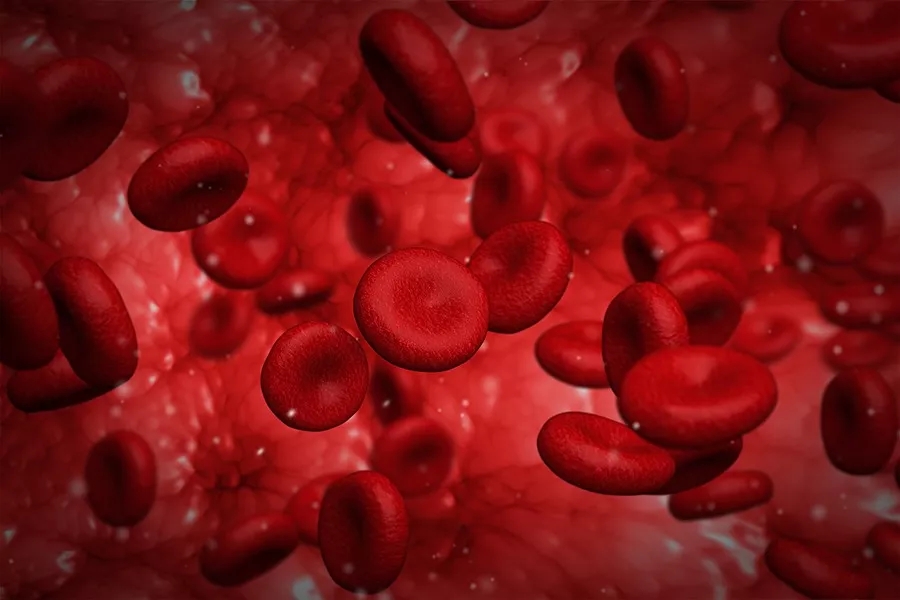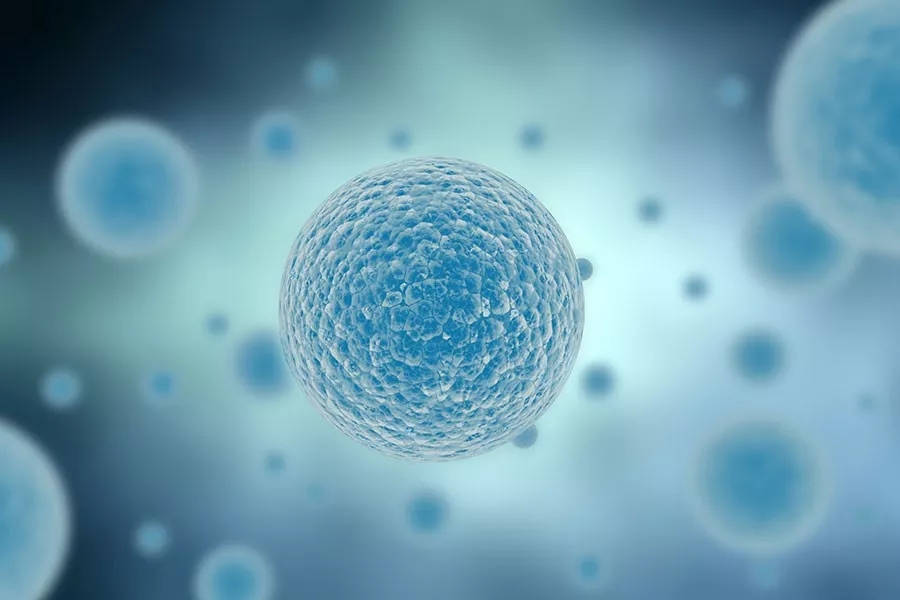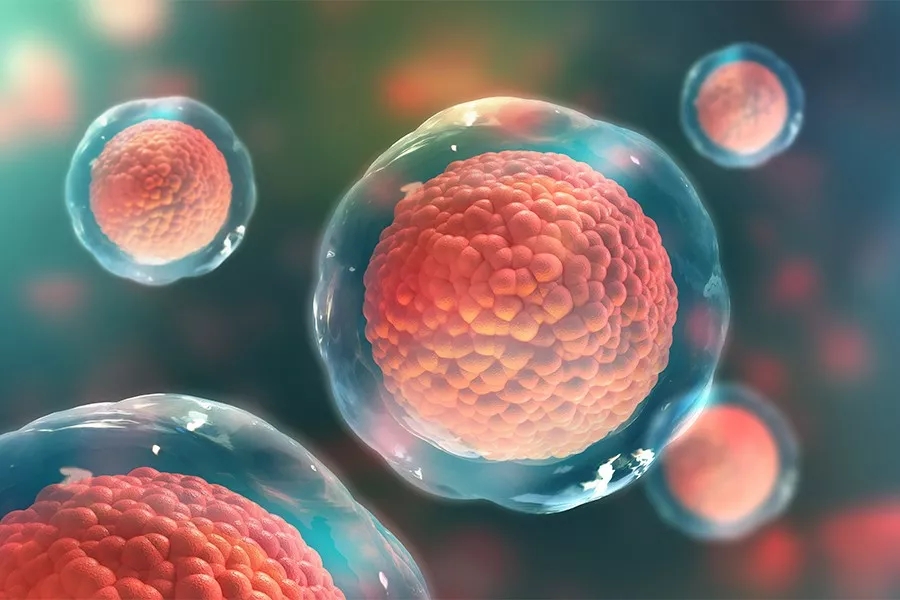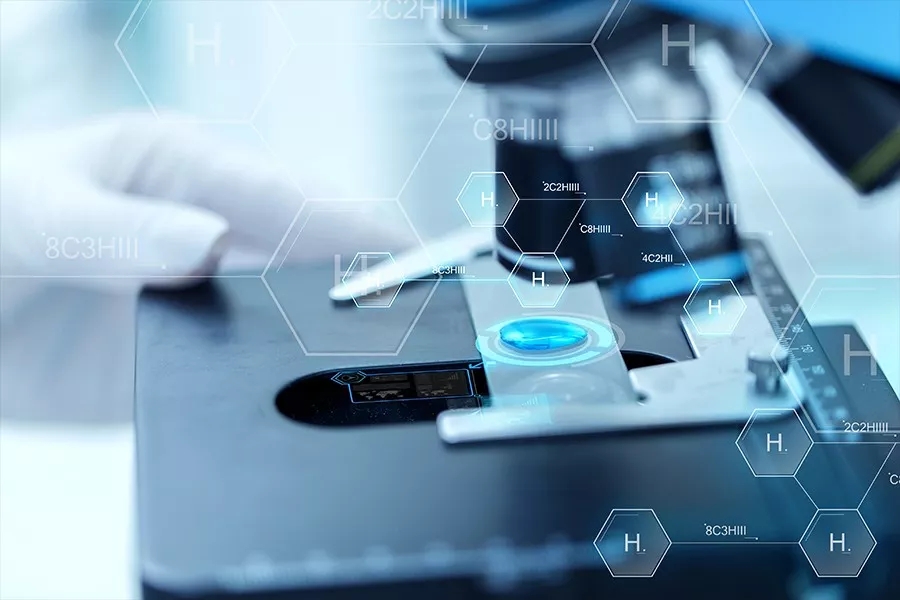
2020年了,你知道细胞为什么可以储存20年吗?
发布时间:2020-01-10
一转眼,已经2020年了,还记不记得20年前的你在做什么?能不能想象出20年后的你会在哪里?有没有想过,你储存的细胞们20年后还好吗?会不会还像当时的你或你的宝宝一样年轻有活力?我是华大细胞的Dr.Wang,下面由我来向大家解答一下吧。

图 | Dr.Wang
储存细胞的种类主要可以分为生殖细胞、血液细胞、多能干细胞、间充质干细胞和其他组织来源的细胞。环境温度高低和储存时间长短等因素都会对细胞的状态产生一定影响。 深低温(<-80℃)保存是长期储存活细胞的常规方法,虽然在深低温保存时,不同细胞的活性和功能受到的影响会有一定差异,但是对经过长期冻存的细胞进行大量验证后,业内公认,细胞基本上可以在深低温环境下稳定储存20年。
我们都知道,在正确储存条件下,食品在保质期内可以正常食用,即使略微超出了保质期,也不会立即腐坏,而如果保存不当,可能没到保质期就已经长满细菌了。细胞储存期限和食品保质期类似,由于细胞冻存时间比普通食品保质期要长得多,对于某些种类的细胞目前还没有冻存10年、20年或更长期的研究,但是,根据目前已有研究结果,基本可以确定20年是能够保证细胞质量的可靠储存期限。
以普遍使用的-196℃液相液氮储存条件为例,以下研究结果介绍了冻存时间对不同细胞复苏后生长状态的影响。
包括卵子和精子

卵子
与新鲜卵子相比,冻存3.5年的卵子虽然囊胚形成率(受精卵开始发育的一个阶段)有一定下降,但受精成功率、受精卵的非整倍体率(异常率)、着床率与出生率都没有显著差异[1]。2014年有报道称,一位阿根廷女性使用自己14年前冻存的卵子,成功怀孕并生下一个健康的女婴[2]。
精子
有报道称,通过使用冻存了21年或28年的精子,成功进行人工授精生出宝宝[3, 4]。2012年,一对双胞胎女婴诞生,她们是使用冻存精子进行体外授精后成功出生的,而这批精子更是冷冻了40年之久[5]。
主要包括造血干细胞、免疫细胞和红细胞

造血干细胞
Hematopoietic Stem Cells, HSCs
HSCs的主要来源为骨髓、脐带血和外周血。自从第一例骨髓移植和脐血移植分别于1957年和1988年成功实施后,造血干细胞移植成为了治疗白血病等严重血液系统疾病的重要手段[6, 7]。
骨髓来源造血干细胞 (Bone Marrow HSCs)
2002年,美国和澳大利亚研究人员分别发现,将骨髓造血干细胞冻存于液氮中,在11.8年和14年后还能够保持体外培养活性和移植潜力[8, 9]。经过检验冻存11至19年的骨髓和外周血来源的造血干细胞,发现除了细胞复苏效率、细胞活性、总有核细胞数与CD34+细胞(HSCs)数都随冻存时间延长有所下降外,粒细胞-巨噬细胞集落形成单位(CFU-GM)没有明显变化[10]。最有说服力的一项研究是2011年美国研究人员使用冻存21年的骨髓干细胞成功进行了自体干细胞移植[11]。
脐带血来源造血干细胞 (Umbilical cord blood HSCs)
韩国、日本和美国的研究人员分别发现,冻存1年、2年、5年和9年至17.8年的脐血样本,复苏后干细胞都能够保持正常活性,与未经冻存的样本没有明显差异[12-15]。冻存11年的脐血样本经过复苏后,总有核细胞数、细胞活性、集落形成能力与移植后的功能都保持正常,没有受到长时间冻存的影响[16],即使是在-80℃条件下也是如此[17]。美国印第安纳大学医学院的Hal Broxmeyer于2003年复苏了冻存15年的脐血干细胞,经过检测发现,这些干细胞依然能够保持活性,细胞数量、增殖能力和集落形成能力等都在正常范围内,并且将该HSCs移植到免疫缺陷小鼠模型后,可以观察到干细胞增殖和分化。2011年Hal Broxmeyer又复苏了冻存21年至23.5年的脐血样本,经过体外和体内实验分别验证,干细胞不仅显示出良好的增殖能力和移植活性,也可以被诱导为多能干细胞,而且样本中还可以分离出内皮祖细胞,表明脐血样本没有受到长时间冻存的影响[18, 19]。
外周血来源造血干细胞 (Peripheral Blood HSCs)
与冻存5个星期相比,冻存9至10年对外周血来源造血干细胞的活性没有明显差异,进行自体移植后,干细胞可以正常发挥功能[20]。除了50岁以上志愿者捐献的干细胞复苏后活性不佳以外,冻存10年对外周血来源造血干细胞的细胞活性、白细胞与红细胞集落形成能力都没有明显影响。不过冻存15年的样本中,白细胞与红细胞集落形成能力明显下降。另外冻存前CD34+细胞比例越高,复苏后干细胞的集落形成能力越好[21]。在-150℃条件下冻存14.6年,外周血来源造血干细胞的活性可以保持稳定,复苏后干细胞的活率与冻存前的粒细胞比例呈负相关,而与冻存前的淋巴细胞比例呈正相关[22]。在-140℃气相液氮中分别冻存<1年、1-9年和>9年时间,对外周血干细胞的功能,例如进行自体移植后的淋巴细胞、粒细胞和血小板的数量恢复能力,都没有明显影响[23]。
免疫细胞
Immune Cells
免疫细胞又称外周血单个核细胞 (Peripheral Blood Mononuclear Cells, PBMCs),包括淋巴细胞与自然杀伤细胞等多种白细胞。首医北京佑安医院研究人员发现冻存2至11年时间对PBMCs复苏后的活性没有影响,细胞冻存时的数量与细胞活性呈正相关[24]。通过对冻存12年的596份PBMCs样本复苏和分析,发现复苏细胞数为50%,活率为90%,细胞活率并没有随冻存时间延长而下降[25]。经过143天、5.2年到7年冻存的白细胞,总有核细胞复苏率和活性没有差异,并且CD3+淋巴细胞的复苏率有所上升[26]。冻存7年的淋巴细胞仍然可以成功建立细胞系[27]。
红细胞
Red Blood Cells
用40%甘油将红细胞保存在PVC袋内,在-80℃条件下储存10年后,红细胞形态、携氧功能等都在正常范围内[28]。同样条件下冻存21年后,复苏率仍可以达到90%,输血后24小时存活率为85%,有效性为75%[29]。同样条件下冻存长达37年的红细胞复苏率仍然有75%,其他方面检测结果也在可接受范围内[30]。
主要包括胚胎干细胞和诱导多能干细胞

人胚胎干细胞
human Embryonic Stem Cells, hESCs
冻存9年的hESCs显示出了超过95%的活率[31]。冻存18年的人类胚胎,复苏后能够培养出hESCs,细胞的多能性基因表达水平、分化能力、核型、端粒酶活性等指标都符合hESCs标准,与使用新鲜胚胎培养的hESCs相比没有差异[32]。
诱导多能干细胞
induced Pluripotent Stem Cells, iPSCs
iPSCs和hESCs可以在-80 °C稳定冻存1年的时间,不影响细胞的活性与功能[33]。

骨髓来源间充质干细胞
Bone Marrow-derived MSCs, BM-MSCs
经过对比新鲜制备的和冻存23至25年的BM-MSCs,解放军海军总院的研究人员发现冻存的BM-MSCs虽然复苏后的初始活率较低,但当培养到P3代时,与新鲜细胞相比,BM-MSCs增殖能力、表面标志物,以及向骨、脂肪和神经诱导分化的能力都没有显著差异[34]。
脂肪来源间充质干细胞
Adipose-derived Stem Cells, ASCs
与未冻存的细胞相比,冻存10个月后的ASCs在细胞增殖能力、细胞表面标志物、基因表达、成骨与成脂分化等方面,都没有显著差异[35]。冻存3至7年与>10年的ASCs复苏后的细胞活性、免疫表型与成脂分化能力都没有区别,只有代表成骨分化的几个基因表达有一些不同,但影响不大[36]。

分别冻存1、3、6和12个月的人体皮肤来源的成纤维细胞与角质形成细胞在纯度与增殖能力方面没有显著差异,虽然随着冻存时间延长细胞活性有所下降,但仍然能够保持在60%以上[37]。在-80℃条件下,人肝癌细胞可以稳定冻存8年[38]。加拿大Alberta大学研究人员报道,人胰岛组织冻存接近20年后仍然具有正常的基因表达与活性,移植到小鼠体内后可以发挥一定的调节血糖功能[39]。
综上所述,目前已经报道的不同组织来源的多种细胞具有一定的稳定冻存时间,对大部分种类细胞而言,长时间冻存对复苏后的细胞活性、增殖能力、纯度、基因表达等方面的影响并不大。其中骨髓与脐血来源的造血干细胞、骨髓来源间充质干细胞、红细胞等都有冻存20年的记录。
华大细胞提供的细胞储存产品包括多种体细胞,例如免疫细胞、间充质干细胞(包括脐带、胎盘、脂肪、牙髓来源)和皮肤成纤维细胞。新推出的脐带干细胞资源储存产品属于组织储存,类似的胰岛组织已有储存近20年的记录。通过以上的种种实例,我们可以充分地相信,在稳定低温环境下保存20年后,在华大细胞储存的样本依然可以保持正常活性和功能,为您将来的健康保驾护航。我们会进行长期的后续研究,用实际数据来证明华大细胞储存工艺技术的可靠性。20年后,让我们共同来见证吧!
参考文献
1.Goldman, K.N. et al., Long-term cryopreservation ofhuman oocytes does not increase embryonic aneuploidy. Fertil Steril 103, 662-8 (2015)
2.Urquiza,M.F. et al., Successful live birthfrom oocytes after more than 14 years of cryopreservation. J Assist Reprod Genet 31, 1553-5 (2014)
3.Horne,G. et al., Live birth with spermcryopreserved for 21 years prior to cancer treatment: case report. Hum Reprod 19, 1448-9 (2004)
4.Feldschuh,J. et al., Successful sperm storagefor 28 years. Fertil Steril 84, 1017(2005)
5.Szell,A.Z. et al., Live births from frozenhuman semen stored for 40 years. J AssistReprod Genet 30, 743-4 (2013)
6.Thomas,E.D. et al., Intravenous infusion ofbone marrow in patients receiving radiation and chemotherapy. N Engl J Med 257, 491-6 (1957)
7.Gluckman,E. et al., Hematopoieticreconstitution in a patient with Fanconi's anemia by means of umbilical-cordblood from an HLA-identical sibling. NEngl J Med 321, 1174-8 (1989)
8.Donnenberg,A.D. et al., Viability ofcryopreserved BM progenitor cells stored for more than a decade. Cytotherapy 4, 157-63 (2002)
9.Spurr,E.E. et al., Cryopreserved humanhaematopoietic stem cells retain engraftment potential after extended (5-14years) cryostorage. Cryobiology 44, 210-7(2002)
10.Fernyhough,L.J. et al., Relative recovery ofhaematopoietic stem cell products after cryogenic storage of up to 19 years. Bone Marrow Transplant 48, 32-5(2013)
11.Holter,J. et al., Successful autologousstem-cell transplantation after 21 years of cryopreservation. Transplantation 91, e54-5 (2011)
12.Lee,H.R. et al., Quality of cord bloodcryopreserved for up to 5 years. BloodRes 49, 54-60(2014)
13.Seo,S.H. et al., Long-Term QualityControl Program Plan for Cord Blood Banks in Korea: A Pilot Study forCryopreservation Stability. Ann Lab Med37, 124-128(2017)
14.Yamamoto,S. et al., Quality of long-termcryopreserved umbilical cord blood units for hematopoietic celltransplantation. Int J Hematol 93, 99-105(2011)
15.Veeraputhiran,M. et al., Viability and engraftmentof hematopoietic progenitor cells after long-term cryopreservation: effect ofdiagnosis and percentage dimethyl sulfoxide concentration. Cytotherapy 12, 764-6 (2010)
16.Mitchell,R. et al., Impact of long-termcryopreservation on single umbilical cord blood transplantation outcomes. Biol Blood Marrow Transplant 21, 50-4(2015)
17.Hubel,A. et al., Postthaw characterizationof umbilical cord blood: markers of storage lesion. Transfusion 55, 1033-9 (2015)
18.Broxmeyer,H.E. et al., High-efficiency recoveryof functional hematopoietic progenitor and stem cells from human cord bloodcryopreserved for 15 years. Proc NatlAcad Sci U S A 100, 645-50 (2003)
19.Broxmeyer,H.E. et al., Hematopoieticstem/progenitor cells, generation of induced pluripotent stem cells, andisolation of endothelial progenitors from 21- to 23.5-year cryopreserved cordblood. Blood 117, 4773-7(2011)
20.Abbruzzese,L. et al., Long term cryopreservationin 5% DMSO maintains unchanged CD34(+) cells viability and allows satisfactoryhematological engraftment after peripheral blood stem cell transplantation. Vox Sang 105, 77-80 (2013)
21.Vosganian,G.S. et al., Effects of long-termcryopreservation on peripheral blood progenitor cells. Cytotherapy 14, 1228-34 (2012)
22.Winter,J.M. et al., Long-term effects ofcryopreservation on clinically prepared hematopoietic progenitor cell products.Cytotherapy 16, 965-75(2014)
23.Lisenko,K. et al., Storage Duration ofAutologous Stem Cell Preparations Has No Impact on Hematopoietic Recovery afterTransplantation. Biol Blood MarrowTransplant 23, 684-690 (2017)
24.Sun,J. et al., Quality of CryopreservedPeripheral Blood Mononuclear Cells Recovered from the Hepatitis/AIDS Biobank. Biopreserv Biobank (2018)
25.Kleeberger,C.A. et al., Viability and recoveryof peripheral blood mononuclear cells cryopreserved for up to 12 years in amulticenter study. Clin Diagn Lab Immunol6, 14-9(1999)
26.Stroncek,D.F. et al., Stability ofcryopreserved white blood cells (WBCs) prepared for donor WBC infusions. Transfusion 51, 2647-55(2011)
27.Tremblay,S. and E.W. Khandjian, Successful use of long-term frozen lymphocytes for theestablishment of lymphoblastoid cell lines. ClinBiochem 31, 555-6 (1998)
28.Lecak,J. et al., Evaluation of red bloodcells stored at -80 degrees C in excess of 10 years. Transfusion 44, 1306-13 (2004)
29.Thesafety and therapeutic effectiveness of human red cells stored at - 80 degreesC for as long as 21 years. (1989)
30.Valeri,C.R. et al., An experiment withglycerol-frozen red blood cells stored at -80 degrees C for up to 37 years. Vox Sang 79, 168-74(2000)
31.Shroff,G. and D. Vatsa, Cell Viability of Human Embryonic Stem Cells Stored for aPeriod of 9 Years. Exp Clin Transplant15, 344-349(2017)
32.Pruksananonda,K. et al., Eighteen-yearcryopreservation does not negatively affect the pluripotency of human embryos:evidence from embryonic stem cell derivation. Biores Open Access 1, 166-73 (2012)
33.Yuan,Y. et al., Efficient long-termcryopreservation of pluripotent stem cells at -80 degrees C. Sci Rep 6, 34476 (2016)
34.Shen,J.L. et al., Effectiveness of humanmesenchymal stem cells derived from bone marrow cryopreserved for 23-25 years. Cryobiology 64, 167-75(2012)
35.Shah,F.S. et al., The RelativeFunctionality of Freshly Isolated and Cryopreserved Human Adipose-DerivedStromal/Stem Cells. Cells Tissues Organs201, 436-444(2015)
36.Shaik,S. et al., Effects of Decade LongFreezing Storage on Adipose Derived Stem Cells Functionality. Sci Rep 8, 8162 (2018)
37.M.F,I. et al., Long Term Effect ofCryopreservation on Primary Human Skin Cells. Sains Malaysiana 48, 137-144 (2019)
38.Miyamoto,Y. et al., Long-term Cryopreservationof Human and other Mammalian Cells at −80 °C for 8 Years. Cell Medicine 10, 215517901773314 (2018)
39.ManningFox, J.E. et al., Human isletfunction following 20 years of cryogenic biobanking. Diabetologia 58, 1503-12 (2015)